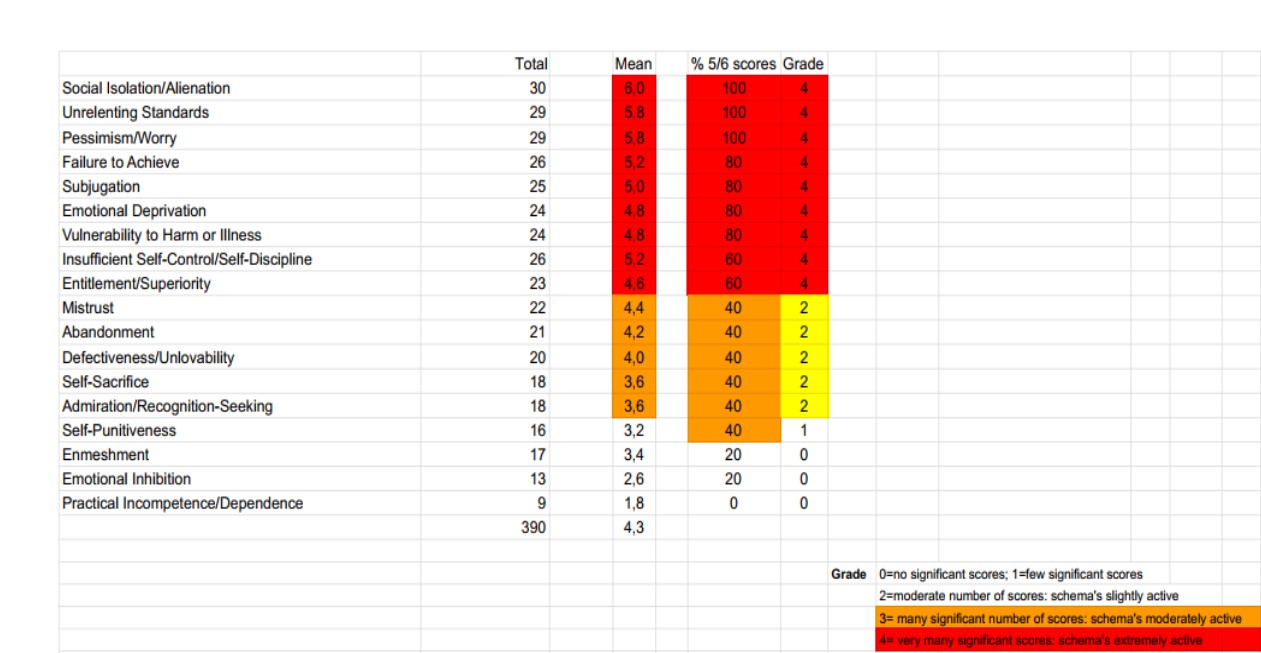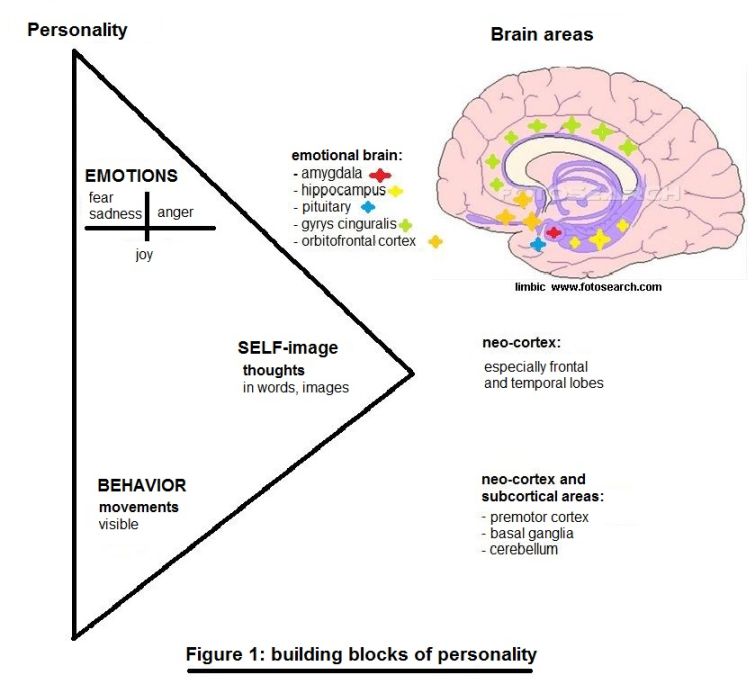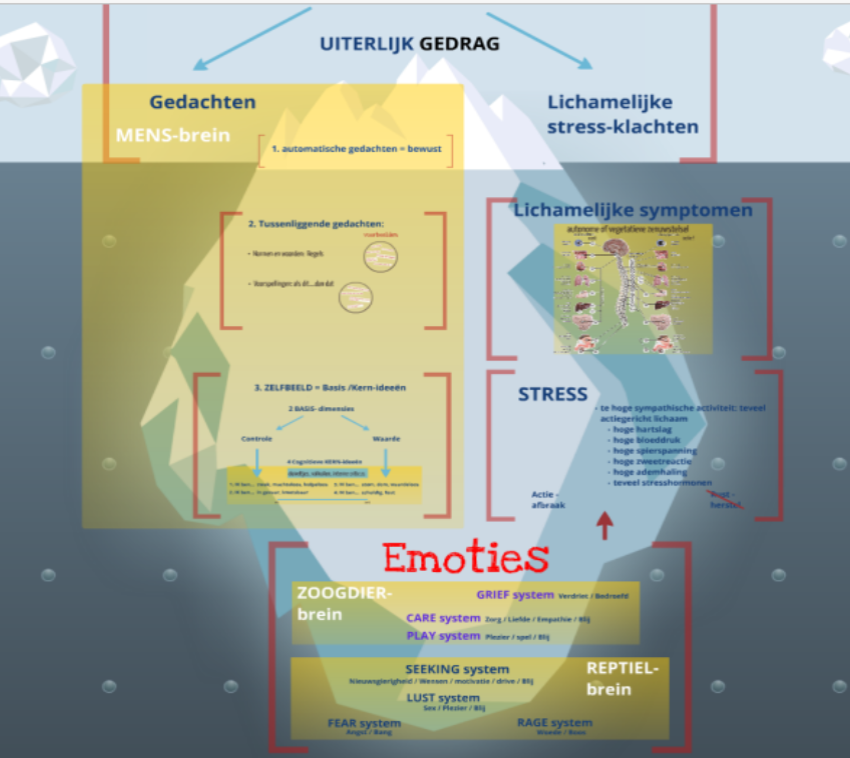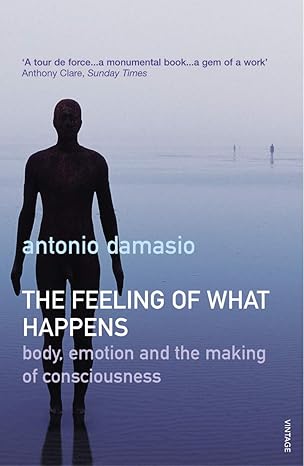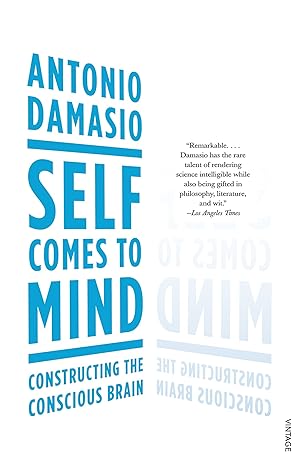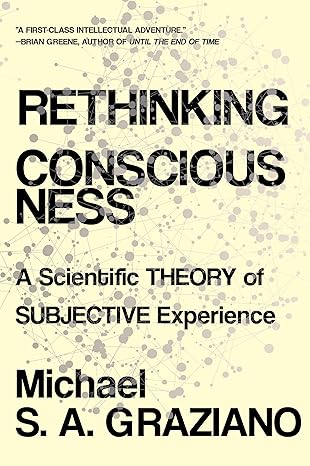- Home
- Personality
- Neuropsychology of Self-image
Neuropsychology of Self-image
Ga HIER naar de Nederlandse versie van deze pagina
On the page of the Self-Image Model I have already explained how the Self-Image works in general. But I have not yet told you several details that are known from neuropsychology.
Many people think that the image you have about yourself is often mainly conscious and consists of certain qualities. They usually have no idea of what specific qualities the self-image is made up and often haven't thought about it. Moreover, the image you have of yourself is an image created by your brain that is subject to emotions and cognitions and does not always correspond to your real characteristics. That has to do with how your brain works. Below you will find a short introduction into one model of our consciousness and our Self that I really like. It is from the neuroscientist Antonio Damasio. On another page I will explain more about what a healthy Self-image should be.
Damasio's model of consciousness and Self
The neuroscientist who has written a lot about the Self is Antonio Damasio. See also the column on the right with Recommended books.
He tries to sketch a model, based on his years of research experience and his own creative thought processes, of different forms of the Self. He continues to wonder about HOW the Self is formed in our brains. In particular, how consciousness also arises and is co-formed with the Self. No scientist has ever been able to explain Consciousness properly. How can something as fascinating as our consciousness arise from matter, out of cranial nerves?
In my opinion, Damasio has come quite close to a reasonable explanation with his latest books and names several forms of the Self: the proto-self, core consciousness and extended consciousness. The proto-self is an unconscious collection of all kinds of bodily processes from which a 'physical map' is made.
This proto-self thus knows what is happening in its own body at any moment. Keeping track of this body, which happens in different parts of the brain, is especially necessary to maintain the natural balance, the homeostasis of the body. For example, blood pressure, heart rate, body temperature, the amount of hormones in the blood, muscle tension and the like. After all, such bodily functions must all remain within certain bandwidths. For example, your body temperature should not rise too high, not much lower or higher than 37 degrees on average.
The moment the proto-self registers an imbalance, alarm signals go off in the brain, stimulating certain actions, both physical and behavioral. According to Damasio, this happens through the basic emotions. According to him, emotions are unconscious physical processes that have a signaling function: they signal that actions need to be taken to restore the perceived imbalance. Fear, for example, causes the heart rate to increase, muscle tension to increase, attention to narrow and the brain to change things on both a subconscious and conscious level.
The autonomic nervous system actually responds first and shows your basic emotions. A sympathetic stress reaction can be one resulting from the basic emotion of Fear or from Sadness or from Anger. The physical reactions are unconscious and in fact work fully automatically. Our body reacts to an imbalance long before we are aware of it. Fortunately, because from an evolutionary perspective, this very fast response pattern has proven to be life-saving. Only later in evolution did our brain develop further and expanded consciousness emerged.
Damasio now states that when there is an imbalance in the unconscious proto-self, emotions arise. If these basic emotions are intense enough, certain parts of the brain become more active and these emotions are translated into feelings. Only then does a person become aware of his body, himself.
Damasio calls this primitive consciousness the Core Consciousness. This Core consciousness actually creates another map of the body, namely what changes there are based on the basic emotions. These changes are not only in the form of physical changes such as turning red, getting warmer, higher heart rate, higher blood pressure, more sweating, higher muscle tension, but there are also behaviors associated with them. This could be e.g. prick up the ears (in animals), open the eyes wider, turn the head, stand stock still or run away. The Core consciousness is built on the Proto-self and therefore needs constant input from this proto-self. Damasio states that these changes in the form of mental images are present in the brain. It is not yet complete consciousness, but it is a somewhat simpler, lower, less extensive form of consciousness. He also states that many animal species have this form of consciousness.
At most, core consciousness is aware of bodily changes based on both internal and external stimuli in the environment. This consciousness is largely focused on the here and now, the present moment. It cannot extend to an image of a future or a past. It is not complex and stable enough for that.
To achieve Extensive consciousness though, a more complex brain is required with good memory and language. After all, a good memory means that momentary events can be stored and remembered for longer than just a few seconds. Many animal species such as goldfish, cats and dogs can remember certain events for years. Presumably they do not have the capacity to think very abstractly, but their memory is made up of very concrete images, activities and spatial images.
This abstract thinking is, in fact, what sets us apart from most animal species. Damasio and many other neuroscientists think that having language makes the big difference. Language is able to create abstraction, to withdraw us from the present moment. If you can remember more than very concrete images around you and you can especially establish certain relationships between those images, and therefore also create new fantasy images, then you can fantasize. Fantasizing actually means coming up with images that go beyond what you are actually experiencing at a given moment. Symbols in particular, such as letters, can be used to form concepts and complex thoughts. Thoughts and images that are more abstract, that are no longer directly linked to very concrete experiences.
Through language and a good and sufficiently large memory, many experiences can be stored in your brain as a script or story. Then the Autobiographical Self can develop. This is partly conscious. Aware that you have a body, that you have emotions, that you have certain behavior, that you are yourself. This also requires a good attention span and a good working memory within which both memories and current images of the environment can be processed quickly at the same time. In addition, sufficient language skills are required to be able to create a sufficiently abstract story of your Self.
This story, your Autobiographical Self, gradually develops in your life. A baby also has an Autobiographical Self, but this is still predominantly unconscious and primitive, not so extensive. That is understandable because a baby does not yet have a good, stable memory and also insufficient language (vocabulary is still very limited). So creating an extensive story about itself is still impossible for a baby. Only when his memory and vocabulary grows, e.g. with a toddler (around 2 years old), you also see a clearer Autobiographical Self emerging. In other words, an individual identity also develops, a sense of a Self. The consciousness of Self gradually becomes greater and greater.
Damasio's model is not unique. Michael Graziano has also tried to explain consciousness with his AST (Attention Schema Theory). He states that the brain creates models of attention, not always perfectly. One of those models is the Self model. It would go too far to discuss Graziano's model here. See the Recommended books column for this.
Despite the criticism of Damasio's model, which still does not explain how exactly Self-consciousness arises in the brain, I like to use his model. Because I think he can explain well that the brain and certainly consciousness is structured in layers and works hierarchically. Our autobiographical Self-consciousness is built on the Core-consciousness and that in turn is built on the Proto-self. Different brain systems operate these 3 forms of consciousness. To better understand Damasio's model, it is useful to have a picture. I found this in the article by Krauss and Maier, Will we ever have conscious machines?, Frontiers in computational Neuroscience, 2020. Click HERE for this interesting article.
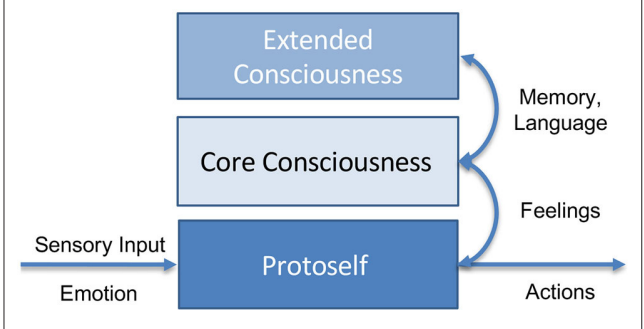
Source: article of Krauss and Maier, Will we ever have conscious machines? Frontiers in computational neuroscience, 2020.
Key points of our Self-image
It would take us too far to describe all the brain areas where our Autobiographical Self can be located. That's probably many subcortical and cortical areas. I don't think this is necessary at all for a good understanding of our Self-Image.
In summary, our Self-Image has a few key points:
- it is partly conscious, but largely unconscious
- it is part of the Autobiographical Self that consists of many experiences, memories of events that are linked to your Self-image
- it has 4 fundamental negative Core Cognitions that I also call Self-Image Devils (see here Page about Self-Image Model)
- it is stored in our Long Term Memory
- Long-term memory is mainly managed by the hippocampus as a kind of central coordinator, but many more (sub)cortical brain areas are involved
- it is layered. For simplicity, it has 3 main layers: the 4 basic core beliefs, the If...Then rules-layer and the most conscious Automatic thoughts-layer
- it is at the same time reasonably robust (fixed) but also changeable
On another page What is a Healthy Self-Image, I first explain what a healthy or strong self-image is psychologically speaking. Then I can better explain how and why the Self-image can become damaged and weaker.
Have A Great Story About This Topic?
Do you have a great story, remarks or any additions to or about this? One that could help other people as well and above all is constructive? Then please share it!
DISCLAIMER
I will not take any responsibility for how the information on this website will affect you. It always remains your responsibility to handle all information with care and in case of medical or mental problems you should ALWAYS consult a professional in your neighbourhood!
Ik neem geen enkele verantwoordelijkheid voor hoe de informatie op deze site u zal beïnvloeden. Het blijft altijd uw verantwoordelijkheid om al deze informatie zorgvuldig te bekijken. In het geval van lichamelijke en/of mentale problemen dient u ALTIJD een professional in uw directe omgeving te waarschuwen!
